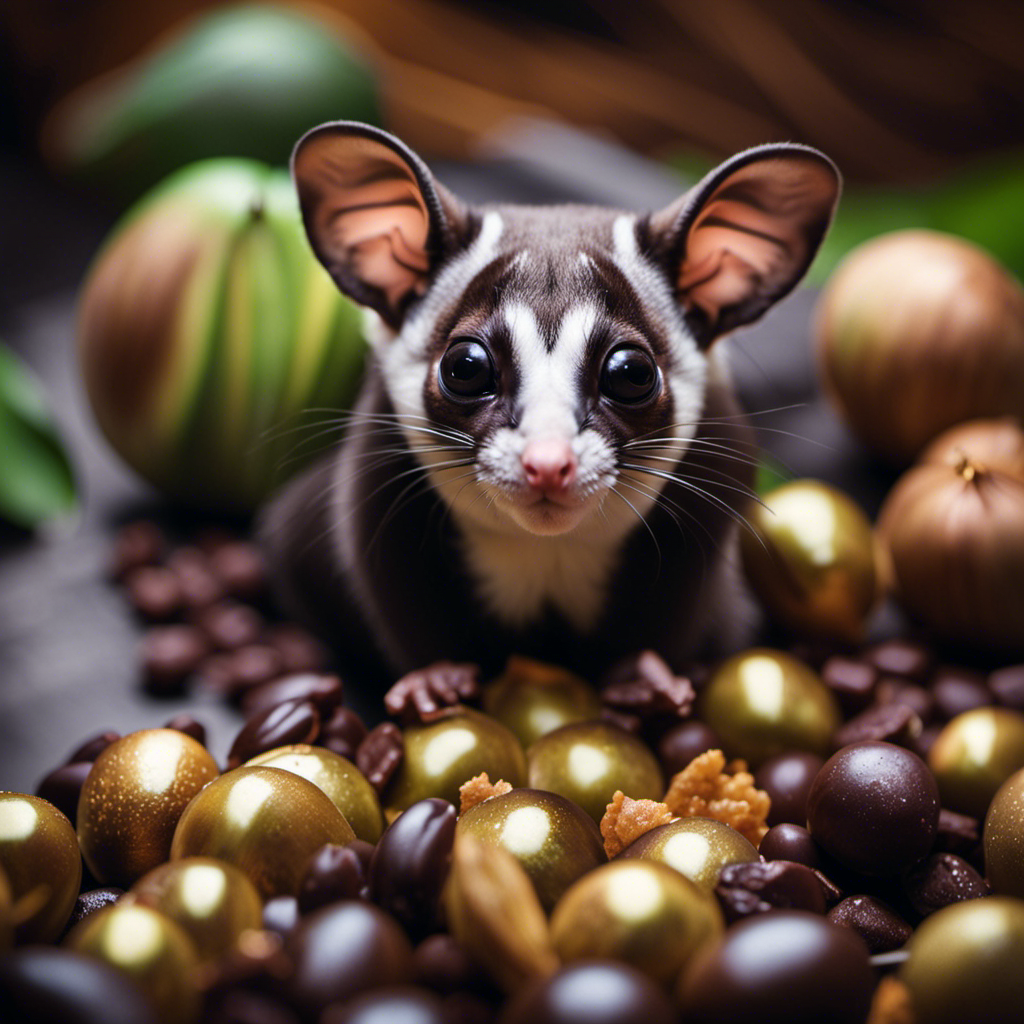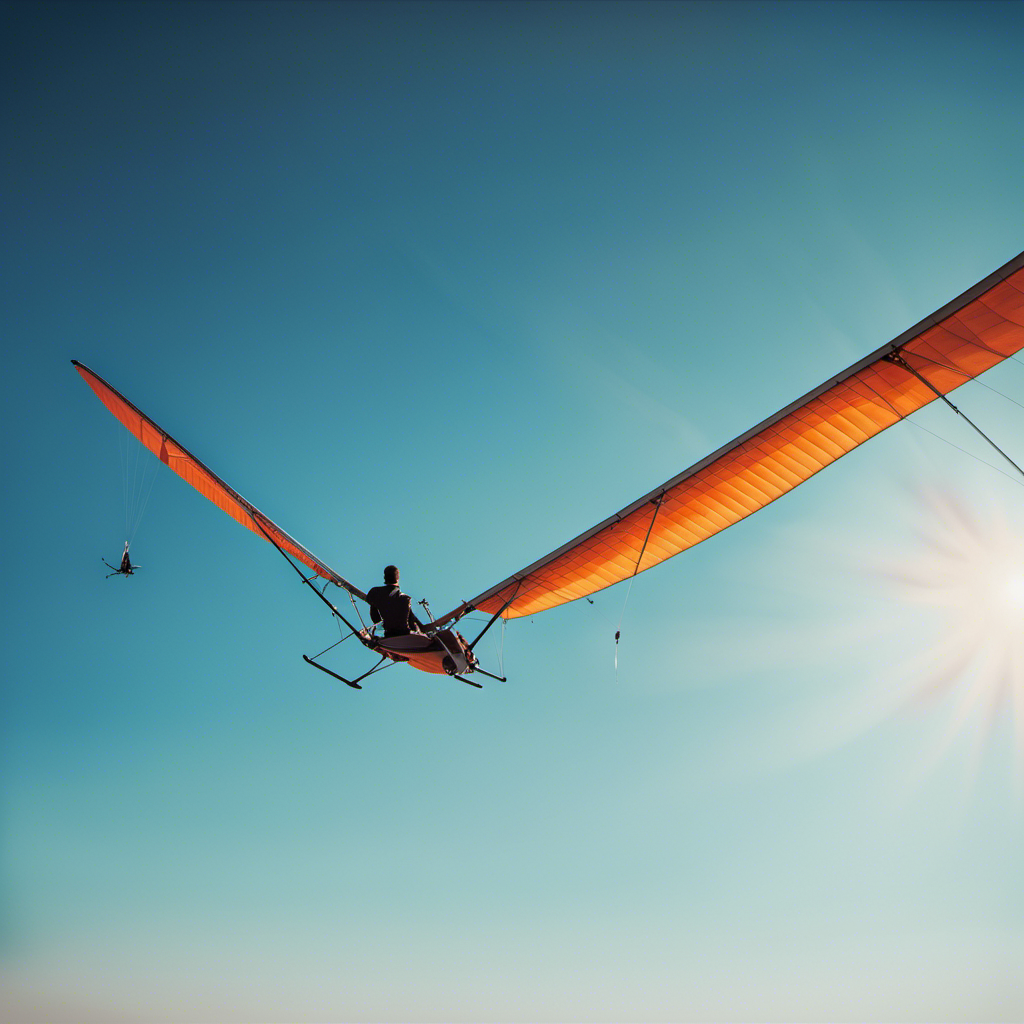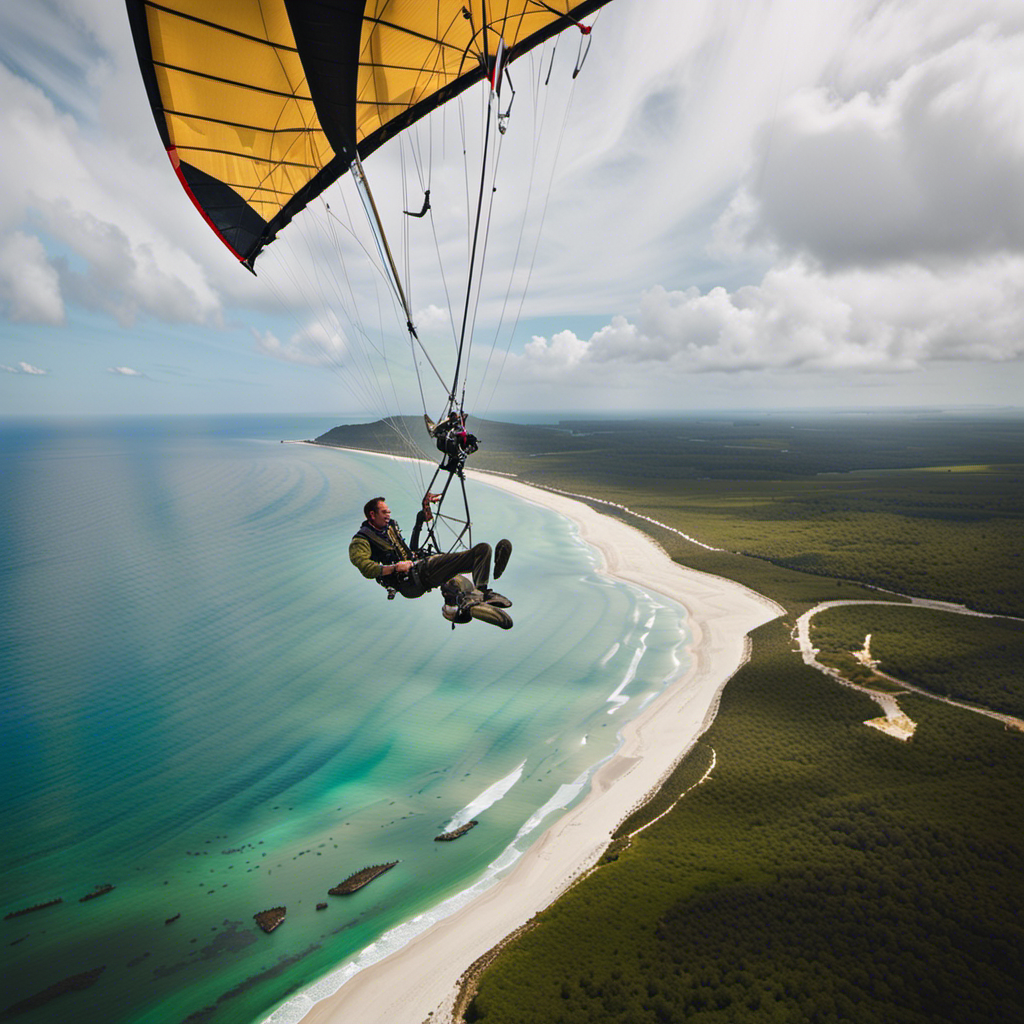As a sugar glider owner, I am constantly mindful of the potential dangers that may exist in my home. It is essential to understand which substances could be toxic to these adorable creatures.
In this article, we will explore common household items, foods, medications, and plants that can pose a threat to sugar gliders. Additionally, we will delve into the harmful substances found in cleaning products and the detrimental effects of secondhand smoke.
Stay informed and keep your sugar gliders safe by taking the necessary precautions.
Key Takeaways
- Chocolate and caffeine can cause seizures, tremors, increased heart rate, and restlessness in sugar gliders.
- Avocado can lead to gastrointestinal upset and heart failure in sugar gliders.
- Onions can cause anemia in sugar gliders.
- Grapes and raisins can result in kidney failure, vomiting, and increased thirst in sugar gliders.
Common Household Items that are Toxic to Sugar Gliders
Some common household items that are toxic to sugar gliders include chocolate and caffeine. As a sugar glider owner, it’s important to be aware of the foods to avoid and the household items to keep away from these small marsupials.
Chocolate, for example, contains theobromine, which can be toxic to sugar gliders and affect their nervous system. Caffeine, found in coffee, tea, and energy drinks, can also have detrimental effects on their health. It’s crucial to ensure that these items are kept out of their reach at all times.
In addition to chocolate and caffeine, there are other household items that can be harmful to sugar gliders. Cleaning products containing chemicals such as bleach, ammonia, and phenols should be stored securely, as these substances can be toxic if ingested or inhaled by sugar gliders. Similarly, pesticides, insecticides, and rodenticides should be used cautiously and kept away from their living spaces.
Foods that are Toxic to Sugar Gliders
I’ve always been fascinated by the different foods that can be toxic to sugar gliders. There are a few key points that I think are worth discussing.
First, chocolate and caffeine are two substances that should never be given to sugar gliders. They can be extremely harmful and even fatal to these small animals.
Next, avocados and onions are also toxic to sugar gliders and should be avoided at all costs.
Lastly, grapes and raisins may seem harmless, but they can actually cause kidney failure in sugar gliders. This makes them another food to steer clear of.
Chocolate and Caffeine
Avoid giving your sugar glider chocolate or caffeine as they can be toxic to them. While these may be tempting treats for us, they pose serious health risks to sugar gliders. Chocolate contains theobromine, a substance that can cause seizures, tremors, and even death in these small creatures. Similarly, caffeine can lead to increased heart rate, restlessness, and potentially fatal cardiac arrest. It is crucial to keep these substances away from your sugar glider’s reach to ensure their well-being.
Instead, opt for safe alternatives such as fresh fruits and vegetables, which are not only healthier but also provide the necessary nutrients for your glider’s growth and development.
Now, let’s explore the potential dangers of avocado and onion for sugar gliders.
Avocado and Onion
Avocado and onion can be harmful to your pet if consumed. It’s important to be aware of the potential health risks associated with these common foods. Here are some key points to consider:
-
Avocado:
-
Contains a substance called persin, which can be toxic to pets, including sugar gliders.
-
Can cause gastrointestinal upset, difficulty breathing, and even heart failure in severe cases.
-
Onion:
-
Contains compounds that can damage a pet’s red blood cells, leading to anemia.
-
Symptoms can include weakness, lethargy, pale gums, and even collapse.
As a responsible sugar glider owner, it’s crucial to ensure that your pet doesn’t have access to these harmful foods.
Now, let’s move on to the next section and discuss the health risks associated with grapes and raisins.
Grapes and Raisins
Watch out for grapes and raisins! These common fruits can pose serious health risks to your pet if consumed. Grape toxicity is a concern for many pet owners, as it can lead to kidney failure in dogs. Even small amounts of grapes or raisins can be toxic and potentially fatal.
It’s important to be vigilant and keep these fruits out of reach of your furry friends. Symptoms of grape toxicity include vomiting, diarrhea, increased thirst, and decreased urine production. If you suspect your pet has ingested grapes or raisins, it’s crucial to seek veterinary assistance immediately.
Medications and Supplements to Avoid
Some medications and supplements can be harmful to sugar gliders, so it’s best to consult with a veterinarian before giving them anything. While there are safe alternatives available, it’s important to be aware of the potential side effects of certain medications and supplements.
Here are some important points to consider:
-
Safe Alternatives:
-
Instead of using over-the-counter pain relievers like acetaminophen or ibuprofen, talk to your vet about sugar glider-specific pain medications.
-
Instead of giving your sugar glider human vitamins or supplements, ask your vet about specialized glider-safe options.
-
Instead of using flea and tick products designed for dogs or cats, use products specifically formulated for sugar gliders.
-
Potential Side Effects:
-
Some medications and supplements can cause gastrointestinal upset or liver damage in sugar gliders.
-
Certain substances, like chocolate or caffeine, can be toxic to sugar gliders and should never be given to them.
-
Some medications can interact negatively with other medications, so it’s crucial to consult with a vet to ensure your sugar glider’s safety.
Considering these factors, it’s important to always consult with a veterinarian before giving any medications or supplements to your sugar glider.
Now, let’s move on to the next section about dangerous household plants for sugar gliders.
Dangerous Household Plants for Sugar Gliders
After discussing the potential dangers of certain medications and supplements for sugar gliders, it is important to also consider the risks posed by toxic household plants. Many pet owners may not be aware that some common plants found in homes can be harmful or even fatal if ingested by sugar gliders. As a responsible sugar glider owner, it is crucial to be aware of these potential dangers and take steps to ensure the safety of our furry friends.
To illustrate the importance of this topic, let’s take a look at a table showcasing some toxic household plants for sugar gliders:
| Plant Name | Toxic Effects |
|---|---|
| Lily of the Valley | Cardiac arrhythmias, vomiting, seizures |
| Aloe Vera | Diarrhea, tremors, depression |
| Sago Palm | Liver failure, vomiting, seizures |
It is alarming to see how easily these seemingly harmless plants can cause harm to our sugar gliders. Ingesting these toxic foods can lead to serious health issues such as cardiac arrhythmias, liver failure, and even death. Therefore, it is crucial to ensure that our homes are free from such plants and to be cautious when introducing new greenery into our sugar gliders’ environment.
Moving forward, we will now explore another potential hazard in our homes: harmful substances in cleaning products.
Harmful Substances in Cleaning Products
When cleaning your home, be mindful of the harmful substances that may be present in certain cleaning products. It’s important to prioritize the safety of your family and the environment by choosing alternative cleaning solutions.
Here are some common cleaning products to watch out for:
-
Bleach:
-
Contains toxic fumes that can irritate the respiratory system
-
Can cause skin and eye irritation
-
Ammonia:
-
Releases strong fumes that can cause respiratory problems
-
Can be harmful if ingested or comes into contact with the skin
To avoid these harmful substances, consider using alternative cleaning solutions such as:
-
Vinegar:
-
Effective for removing stains and disinfecting surfaces
-
Safe to use and environmentally friendly
-
Baking soda:
-
Great for deodorizing and scrubbing surfaces
-
Non-toxic and safe for pets and children
By making simple switches to alternative cleaning solutions, you can create a safer environment for yourself and your loved ones. Transitioning from harmful cleaning products to safer alternatives is just one step towards reducing exposure to toxic substances.
In the next section, we will explore the potential toxic substances in personal care products and how to make healthier choices.
Toxic Substances in Personal Care Products
As a sugar glider owner, it’s important for me to be knowledgeable about the potential risks that personal care products can pose to my pets.
Fragrances and perfumes, while pleasant to us, can contain harmful chemicals that can be toxic to sugar gliders. Additionally, many lotions and shampoos contain ingredients that can be harmful to these small creatures.
However, there are safe personal care products available that are specifically formulated for sugar glider owners, ensuring the well-being of our beloved pets.
Fragrances and Perfumes
Using fragrances and perfumes around sugar gliders can be toxic to their health. These small marsupials are highly sensitive to strong scents, which can lead to fragrance allergies and respiratory problems. As a responsible sugar glider owner, it is important to be mindful of the products we use around them. To help you understand the potential dangers, take a look at the table below:
| Fragrances and Perfumes | Potential Dangers |
|---|---|
| Synthetic chemicals | Respiratory irritation |
| Alcohol-based scents | Skin irritation |
| Strong floral scents | Allergic reactions |
| Essential oils | Toxicity and organ damage |
It is crucial to avoid exposing sugar gliders to these harmful substances. Now, let’s discuss the next section about the harmful ingredients found in lotions and shampoos, which can also pose risks to our beloved sugar gliders.
Harmful Ingredients in Lotions and Shampoos
Make sure to check the ingredients in lotions and shampoos, as harmful substances could be present.
When it comes to caring for our sugar gliders, it’s important to prioritize their safety and well-being. Many commercial personal care products contain chemicals and additives that can be toxic to these delicate creatures.
That’s why it’s crucial to seek out safe alternatives and natural remedies. Look for products that are specifically formulated for sugar gliders or small animals. These products often use gentle, natural ingredients that won’t harm your furry friends.
Ingredients like aloe vera, chamomile, and coconut oil are known for their soothing and moisturizing properties. By choosing these safe personal care products, you can ensure that your sugar glider’s grooming routine is both effective and free from harmful chemicals.
Safe Personal Care Products for Sugar Glider Owners
When it comes to taking care of my sugar gliders, I make sure to be cautious about the products I use. After learning about the harmful ingredients in lotions and shampoos, I became more aware of the potential risks associated with personal care items. That’s why I always opt for safe sunscreens and pet safe cleaning products.
Safe sunscreens are essential to protect my sugar gliders’ delicate skin from harmful UV rays. I look for products that are specifically formulated for pets or babies, as they are less likely to contain harsh chemicals. Similarly, I use pet safe cleaning products to ensure that my gliders don’t come into contact with any toxic substances while exploring their environment.
By being mindful of the products I use, I can provide a safe and healthy environment for my sugar gliders.
Transitioning into the next section, it’s important to consider the harmful effects of secondhand smoke on sugar gliders.
Harmful Effects of Secondhand Smoke on Sugar Gliders
Did you know that secondhand smoke can be extremely harmful to sugar gliders? These small, delicate creatures are highly susceptible to the effects of air pollution, and household smoke poses a significant danger to their well-being. Sugar gliders have highly sensitive respiratory systems, and exposure to secondhand smoke can lead to a range of health issues.
The effects of air pollution on sugar gliders can be devastating. The toxic chemicals present in smoke can irritate their nasal passages, throat, and lungs, causing respiratory distress, coughing, and difficulty breathing. Prolonged exposure to secondhand smoke can also weaken their immune system, making them more susceptible to respiratory infections and other illnesses.
Household smoke, which includes tobacco smoke, cooking fumes, and wood-burning stoves, can have serious consequences for sugar gliders. Even if you smoke in another room or ventilate the area, the harmful particles can still find their way to your glider. It’s essential to create a smoke-free environment for these sensitive animals to ensure their health and well-being.
Transitioning to the subsequent section on potential hazards in the outdoor environment, it’s important to remember that sugar gliders are not only vulnerable to indoor pollutants but also face potential dangers outside the home.
Potential Hazards in the Outdoor Environment
Transitioning to the potential hazards in the outdoor environment, it’s crucial to be aware of the dangers that can pose a threat to the well-being of these delicate creatures. When venturing outside with your sugar glider, it’s important to take necessary safety measures to ensure their protection. Here are three potential dangers in the outdoor environment and how to address them:
-
Predators: Sugar gliders are small and vulnerable, making them easy targets for predators like cats, dogs, and birds of prey. Always keep a close eye on your glider when outdoors and consider using a secure harness or enclosure to prevent them from wandering off or being attacked.
-
Extreme Temperatures: Sugar gliders are native to tropical climates and are sensitive to both extreme heat and cold. Avoid exposing them to harsh weather conditions by keeping them in a temperature-controlled environment, or if outside, provide shade and proper insulation to regulate their body temperature.
-
Toxic Plants: Many outdoor plants can be toxic to sugar gliders if ingested. Before allowing your glider to explore the outdoors, familiarize yourself with the local flora and remove any potentially toxic plants from their reach.
By being aware of these potential dangers and taking appropriate safety measures, you can ensure the well-being of your sugar glider in the outdoor environment.
Now, let’s delve into the necessary safety precautions for sugar glider owners to keep their furry friends safe and sound.
Safety Precautions for Sugar Glider Owners
To keep your furry friend safe and sound, make sure you’re aware of the necessary safety precautions as a sugar glider owner. Safe handling is crucial to prevent any accidents or injuries. When handling your sugar glider, always approach them slowly and gently. Avoid grabbing or squeezing them, as they are delicate creatures with fragile bones. Instead, use a gentle touch and support their body to ensure their safety.
Another important aspect of keeping your sugar glider safe is ensuring they have a proper diet. Sugar gliders are omnivores, so their diet should consist of a balanced mix of fruits, vegetables, insects, and a specialized glider diet. Make sure to research and provide them with the appropriate foods to meet their nutritional needs. Avoid feeding them foods that are toxic to sugar gliders, such as chocolate, caffeine, onions, and garlic.
In addition to safe handling and a proper diet, it’s essential to be aware of emergency steps if a sugar glider is exposed to toxins. In case of accidental exposure to toxic substances, it is crucial to seek immediate veterinary care. Time is of the essence, so don’t hesitate to contact a veterinarian who specializes in exotic animals. Timely intervention can make a significant difference in your sugar glider’s chances of recovery.
Emergency Steps if a Sugar Glider is Exposed to Toxins
If your sugar glider is exposed to toxins, it’s crucial to act quickly and seek immediate veterinary care. Time is of the essence when it comes to toxic exposure, as the effects can be devastating and potentially fatal for your furry friend.
In order to prevent such emergencies, it is important to practice safe handling and take necessary prevention measures.
To ensure the safety of your sugar glider, always wash your hands before and after handling them. This helps to prevent the transfer of any harmful substances that may be present on your hands. Additionally, make sure to keep your sugar glider’s living environment clean and free from potential toxins such as pesticides, cleaning products, and certain plants.
In case of accidental exposure, it is important to be aware of the signs and symptoms of toxic ingestion or contact. These may include vomiting, diarrhea, seizures, difficulty breathing, and loss of coordination. If you notice any of these signs, do not hesitate to contact your veterinarian immediately.
Frequently Asked Questions
Can sugar gliders consume chocolate or other sugary treats?
No, sugar gliders should not consume chocolate or other sugary treats. These can be harmful to their health and may lead to obesity, dental problems, and other health issues. Instead, they can enjoy fruits and vegetables as a healthier treat option.
Are there any over-the-counter medications that can be safely given to sugar gliders?
Over-the-counter medications for sugar gliders are not recommended due to the potential risks they pose. One interesting statistic is that sugar gliders have a unique physiology that can make them more sensitive to certain medications.
What are the common symptoms of sugar glider poisoning?
Common symptoms of sugar glider poisoning include lethargy, loss of appetite, vomiting, diarrhea, and seizures. It is essential to seek immediate veterinary care for treatment options, which may include decontamination, supportive care, and specific antidotes if available.
Is it safe to use scented candles or air fresheners around sugar gliders?
Using scented candles or air fresheners around sugar gliders is not safe. The chemicals in these products can be toxic to them, causing respiratory issues and other health problems. It’s best to avoid using them altogether.
Are there any specific cleaning products that should never be used in the same room as sugar gliders?
When it comes to cleaning around sugar gliders, it’s important to prioritize their safety. Some cleaning products can pose potential dangers due to their chemicals. It’s best to avoid using these in the same room as sugar gliders to prevent any harm.
Conclusion
Well folks, after diving deep into the world of sugar gliders and their toxic enemies, it’s clear that these little critters have quite a few foes lurking in our everyday lives. From household items to foods, medications to plants, there’s no shortage of dangers for our furry friends.
But fear not, dear readers, for armed with this knowledge, we can create a safe haven for our sugar glider companions. So, let’s bid adieu to those toxic terrors and embrace a life filled with laughter, love, and sugar gliders, of course!
Orion, better known as “Jetstream,” is the voice that brings the stories of the skies to life. His fascination with aviation began at a young age, sparked by his father’s tales of flying and adventure. Orion’s journey into the world of gliding was serendipitous, and from the moment he took his first glider flight, he knew he had found his calling.










